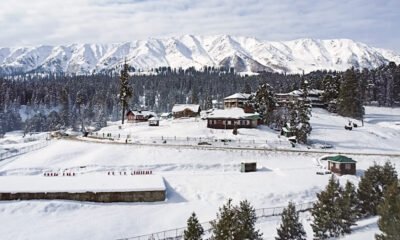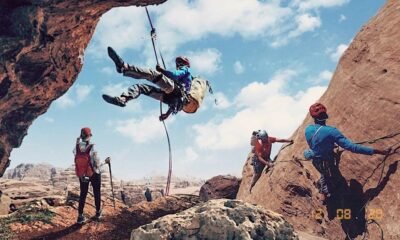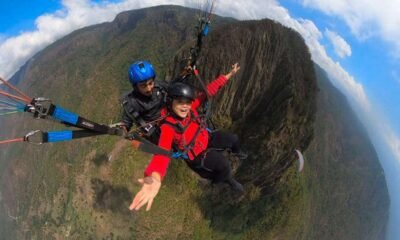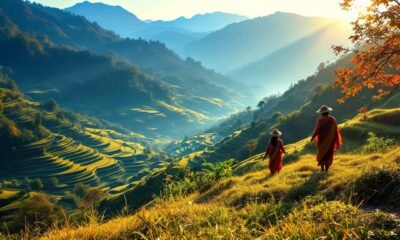Destinations & Things To Do
Adventure Tourism Halted in Kashmir

Adnan’s Journey: A Dream on Hold
With eyes full of wonder and a heart that beats for the mountains, since his childhood Adnan was fascinated by travel, mostly going to the mountains. He was never fascinated by luxury hotels and city lights, but the raw, rugged trails that led through forests, up mountains, and across hidden valleys.
In 2023, when he grew older, he started his shop at Srinagar’s Bemina area, namely Rentozz. The shop is full of gear that is useful for mountaineering, and trekking.
“I started this business so that people interested in adventure tourism could get access to quality gear which was previously not available in Kashmir easily,” he says, and gradually filled up his shop with proper trekking shoes, waterproof tents, sleeping bags, utensils, and climbing ropes.
Travellers either had to rely on poor-quality gear or buy expensive equipment from outside the state.
“Rentozz is a store dedicated to adventure lovers like him. It isn’t just a business—it was my dream,” he says, and his eyes twinkle when he talks about it. In a moment that shine is gone.
“But dreams are fragile in the face of conflict,” he adds with sadness.
“After the attack in Pahalgam, the government imposed a sudden and indefinite ban on trekking activities across Kashmir,” he says. “The decision taken by the Government of India in the name of safety shattered our business. Tourists on adventure trails completely cancelled their plans to visit Kashmir. Locals no longer come to look for gear,” he adds.
From an energetic hub of energy and excitement, Rentozz has become a quiet room filled with untouched gear and fading hopes. Adnan, however, hasn’t given up. “I hope everything will be fine soon,” he says.
Until then, Adnan waits—not giving up, just holding on.
Zeeshan Mushtaq: A Guide without a Trail
Zeeshan Mushtaq, 25, from Srinagar, Soura, has been working as a freelance mountain guide for over a year. He takes people up into the beauty of Kashmir’s hidden valleys, snow-clad slopes, and wild trails. “I guide tourists and locals. Weekends were for group treks,” he says.
This year, Zeeshan had planned to start his own trekking company. I had bookings lined up— people from across India and abroad, also some locals. Some wanted ice climbing, others trekking through the meadows and hills.
Then came the ban!
Without warning, trekking and climbing activities were banned in the name of security. The result was cancellation of every single booking. For Zeeshan this was a blow.
Months of planning were wasted. Income for the season vanished. All the advanced payrolls had to be returned.
I kept calling the tourism department. They listened, but didn’t act. They said it’s because of security reasons. But how do we survive?
I’m not just a guide. I’m someone who wanted to create experiences, jobs, and hope — especially in a place like Kashmir, where unemployment is already crushing so many young dreams.
Now I’m mentally exhausted, not just due to loss of money, but because of loss of momentum, of purpose. When you finally feel like you’re building something real, and it shatters overnight, it feels suffocating.
But still, I tell myself: the mountains haven’t gone anywhere. They are waiting.
Mohsin Farooq: From corporate Desks to Mountain Trails
In the bustling heart of Srinagar’s Nawa Bazar area, Mohsin Farooq started his Adventure Gear business six months ago. Mohsin left behind the comfort of a stable corporate job to follow a path less travelled—one carved through Kashmir’s majestic mountains and valleys.
“For years, I worked behind a desk,” Mohsin says. “The job was good, the pay was handsome, but something was missing”. That “something” was his passion for trekking— and unshakable love for the outdoors – the mountain peaks, the fresh air, and the silence of nature that spoke louder than any office meeting.
One day, he made a bold decision. He quit his job.
With faith and determination, he opened his adventure store, it became more than just a shop; it was a hub for explorers, travellers, and young dreamers. “Every Sunday, our team organises local trekking events, guiding small groups into the surrounding hills and mountains,” he reveals.
But it wasn’t just about the trails. Something deeper was happening.
“I noticed many boys who had fallen into drug addiction. They came with us on these treks, and slowly, they changed. The mountains healed what the streets had broken,” Mohsin shares.
A sudden ban on trekking shattered the business. 90% of our work vanished overnight, he says, his voice heavy. “We faced losses we weren’t prepared for… But more than money, I fear for the youth. Without such outlets, they may fall back into the trap of addiction and hopelessness”.
Despite the setbacks, Mohsin’s resolve remains strong. “Startups face a lot of issues. But we started this with a belief, not just in a business, but in change. And that belief will carry us through.”
From corporate meetings to mountain summits, Mohsin’s journey is one of courage, faith, and resilience— a story that proves that even when the road disappears, the will to walk remains.
Wings in the wind: The story of Two friends from Pahalgam
In the quiet village of Laripora, nestled in the breathtaking Pahalgam valley of Kashmir, two friends — Ishaan Ibrahim Raina and Nasir Hussain Raina — shared a dream that soared higher than the surrounding Himalayan peaks.
From a young age, Ishaan and Nasir were drawn to the skies, They paid ₹50,000 to enroll in the P1, P2 and P3 paragliding courses. It wasn’t easy. Every rupee was earned through hard work, and every lesson was a step closer to touching the sky.
After months of training, they took the next leap: they bought their first glider together — a sleek beauty worth ₹2.5 lakh. It was more than just equipment. It was a symbol of their unity, struggle, and vision. With that glider, they became the first certified paragliding pilots from Kashmir.
In the months that followed, the skies over Pahalgam came alive with colour and joy. Tourists from all over the country came to experience paragliding and the duo were fast recovering their investment cost.
This included the fee for site permission from the government for 3 years to operate their paragliding.
But then the unexpected happened. After the tragic attack in Pahalgam, the government imposed a ban on trekking and related adventure activities across Kashmir. Their business, built with heart and hard-earned money, came to a crashing halt even before they could cover the cost of setting it up.
With no flights, no tourists, and no income, Ishaan and Nasir found themselves grounded — not just in the sky, but in spirit. Their gliders lay folded, gathering dust. The gadgets and safety gear — all investments made with hope — now felt like burdens. They had dreams and plans to promote paragliding education. All of it paused.
“We don’t know when we’ll fly again,” Ishaan said, we thought we were building something beautiful. But now…. We’re stuck. No money, no way forward.”
Desperate and disheartened, they are toying with the idea of shifting their business — perhaps to Himachal Pradesh, where adventure sports still thrives. But starting over isn’t easy when you’re already deep in loss, emotionally and financially.
Still, somewhere inside them, the same fire flickers — the one that once made them chase the wind in winter. Because dreams don’t die in silence — they wait for the wind to rise again.
Payal’s Journey to Kashmir
Payal, a tourist from Mumbai, had always been enchanted by the beauty of Kashmir. She said, with its snow-capped mountains, lush valleys, and serene lakes, it had long held a special place in her heart. So, when she and her husband decided to take a family vacation with their young son, Kashmir was their first choice.
They made their plans well in advance, full of excitement and hope. But just before their trip, news of an attack in Pahalgam came. The incident was disturbing—Payal describes it simply: “it was not good at all”. Many friends and relatives urged them to cancel the trip.
But Payal and her family chose to move forward “We had planned this before the attack, and we believed in the goodness of the place and the people,” she said.
A week after Pahalgam, walking through the peaceful valley and interacting with the warm-hearted locals, she said that she feels safe and welcome. “The people of Kashmir are truly good. They treat us with so much respect and kindness. We never felt unsafe for even a moment,” she shared with a calm smile.
Her message was clear and heartfelt: “Kashmir is a paradise on Earth. Don’t let fear stop you. The people here are dependent on tourism, and by coming here, we support their livelihood and get to experience unmatched beauty and hospitality. I sincerely request everyone to please come to Kashmir without fear”.
Low to modest tourists is beginning to resume since the calm following the three-four days of hostility between India and Pakistan between May7 and May 10. But adventure tourism continues to remain suspended.
Growth and Decline
In recent years, the tourism sector in Jammu and Kashmir had been experiencing steady growth, with visitor numbers rising from 26 lakh in 2022 to 27 lakh in 2023 and reaching an impressive 35 lakh tourists in 2024. After 5 lakh tourists visiting in the first three months of 2025 before the crisis began, the momentum was brutally interrupted after the attack, even more after the India-Pakistan confrontation, leading to skirmishes on the borders and air battles between the two sides.
The impact has been immediate and severe. According to the Kashmir Hotel Association, a staggering 80 percent of tourist bookings to Kashmir were cancelled following the Pahalgam attack, effectively paralysing an industry that had become a cornerstone of the region’s economy.
Mushtaq Chaya, Chairman of the Kashmir Hotel Association said that while tourism stakeholders are undoubtedly affected by the business decline, their primary concern remains the tragic incident itself. “We are not worried by the decline of our business, but we are sad because of the incident that took place in Kashmir,” Chaya stated.
The consequences extend far beyond hotel cancellations. Kashmir’s once-bustling tourism infrastructure now stands largely empty, with mountain retreats deserted and local businesses hit adversely.
While people were slowly beginning to recover from the shock and fear caused by the Pahalgam attack, the recent India-Pakistan military dispute further deteriorated the situation. The conflict, which began when Indian Armed Forces attacked alleged terrorist camps in Pakistan on May 7, 2025, in response to the Pahalgam attack, has created additional layers of uncertainty and fear.
The Kashmir Times visited the director of the tourism office to inquire about the GDP contribution of the tourism sector and the impact of the current situation. However, the PA didn’t permit a meeting, and phone calls went unanswered.
Kashmir’s Skies Grounded
What brought tourism to a complete halt ahead of the India-Pakistan skirmishes was the complete shutdown of the Srinagar airport amidst tensions. But flights remain reduced even after the tensions have subsided a bit.
Kashmir witnessed 70% drop in air flights immediately after Pahalgam attack, even as the fares were drastically slashed.
The India-Pakistan tensions that started building up in the aftermath of the Pahalgam killings compelled the Indian Government to shut 32 airports, including Srinagar airport, leading to suspension of air traffic from May 7 to 15. However, later, after the ceasefire, the airports were re-opened on May 13.
Srinagar airport also resumed operations with about four flights. The number has picked up since then but the size of travellers has drastically dropped.
The official data shows that the number of air travellers has plateaued at around 6,500 from 19,140 passengers before the Pahalgam attack, Now the total traffic combined doesn’t meet either the incoming or departing flyers of 9,000 a day at the airport.
This has forced the airlines to reduce the daily flights by more than half, with a total of 22 flights arriving a day at the Srinagar Airport.
Many flights like Air India operate only five flights a day, while cancelling three scheduled flights to the Valley.
This situation has triggered “operational losses” for many airlines with mass cancellations of tickets in the last over a month.
Majority of the travellers are either the local population, pilgrims to Saudi Arabia for the Hajj pilgrimage or defence personnel, an executive added.
Destinations & Things To Do
CDT + GDT: Leadore to Wisdom – Entering Act Three
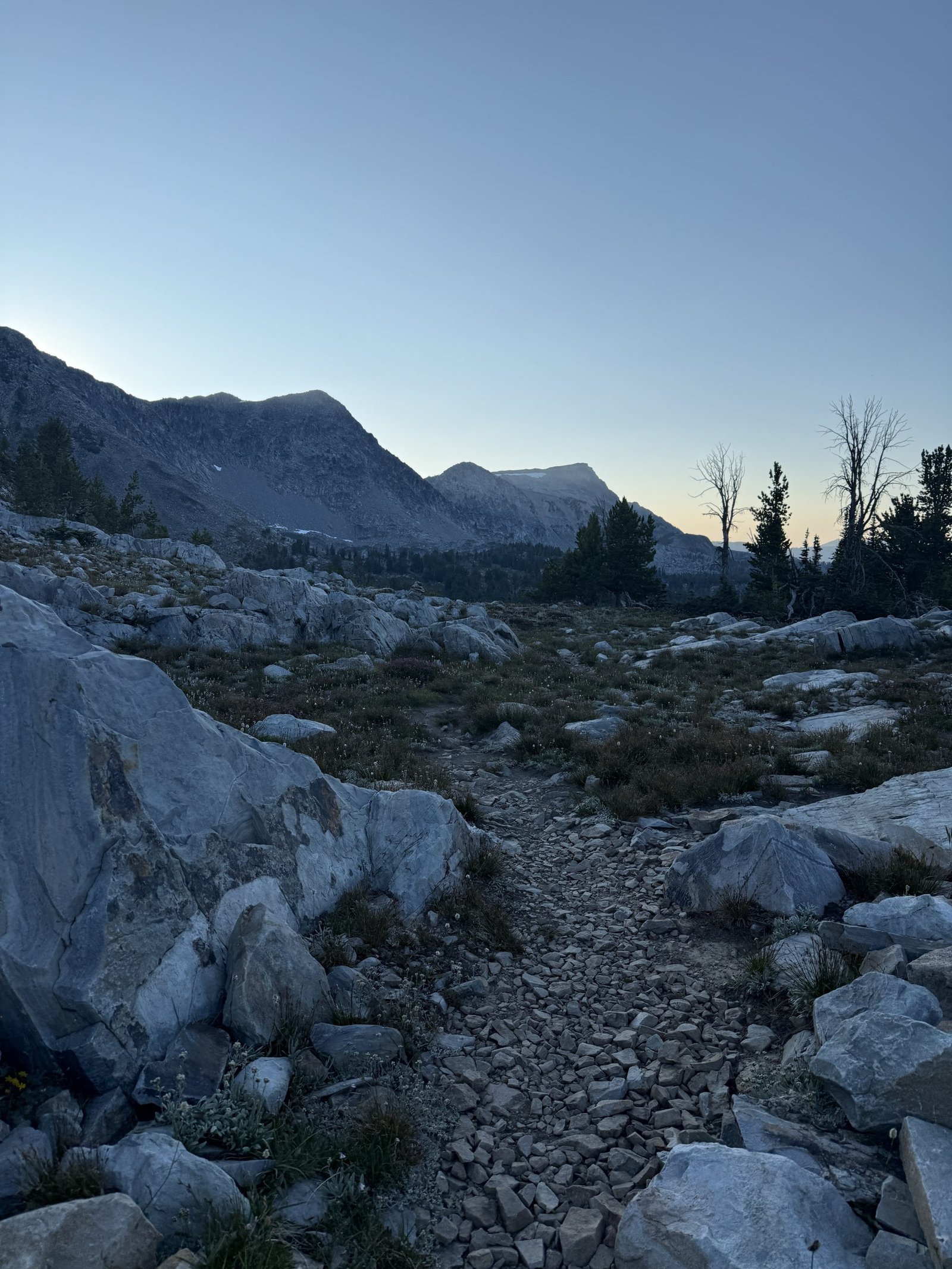
Resupply 24 | Leadore, ID to Wisdom, MT
Author’s note: I am now in crunch time for getting to Canada and posts may be delayed as I try to push bigger days with less catch up time in town.
Day 93, 14.5 miles.
At breakfast this morning I flipped through the first annual CDT 2024 yearbook that my friend Lookout printed. I’m glad the inn had a copy. It can be a very lonely trail so it’s nice to see everyone together. In fact I’ll probably never see the SOBOs I met again until they show up in this yearbook, since they’re headed in the opposite direction. Class of 2025 hikers can go to advtgt.com/class-of-2025 to get notified when yearbook submissions open. Anyone can buy a copy.
Today I did a lot of stretching and logistics and finally organized a shuttle back to trail in the afternoon with a local named Carolyn. On the way up, I told her I had seen a golden eagle. “You know what I just learned about eagles?” she said. “Every forty years, they go hide somewhere and break their beaks and pluck all their feathers so they can regrow.” “Really! That’s insane,” I said. “To put yourself through so much suffering, in order to come out fresh.” Then I thought, well, it’s not unlike what I’m doing, is it? (Author’s note – this is MYTH – I only found out after I had internet later to fact check this).
The hiking today was weirdly easy. It was well graded and well maintained. There wasn’t any crazy wind or biting flies or mosquitoes. I didn’t have to climb over deadfall or get my feet wet. It was cloudy and cool without any rain. The gates opened and closed easily. It was actually pleasant hiking. I thought, am I on the PCT? I kept waiting for the catch. I saw one road up ahead and thought, surely I’ll need to get up that. But the trail contoured around the bend. The cruisy trail gave me a lot of time to think.
On the ridgeline today, I walked past a lot of trees that grew leaned away from the wind. It wasn’t windy now but you could see the impression the wind had left on how the trees grew. Humans are the same. Whatever headwinds you grew up with may be gone, but you might still be compensating. You might still be leaned away instead of leaned into. One thing I love about mountains is that its contours mirror the way water carves into the sandbank on the side of the road. Like something so humble can be scaled up into something so grand. Everything in the physical universe is the same, just at a different scale. I am a human walking in an ecosystem. But I also contain ecosystems: in my gut, in each cell of my body. There is a logic to it all, and I fit into it. I am not separate from all of this. All of this is me, and I am all of this. That’s what’s in my brain when the world recedes and it’s just me and the woods. By the way, I hike totally sober. No drugs, no drinks.
Day 94, 33.3 miles.
The first existential crisis I ever had was when I was six or seven. I was walking to school with my mom, and in Seattle where I grew up, we get a lot of rain. And when there’s rain, there’s slugs. And one day I asked my mom: hey Mom, why do slugs exist? She looked at me and said, “why do you exist?” Oh, this broke my little brain. I mean, you tell me, you gave birth to me! And when I was 9, I read the whole of Gone With The Wind, which is not fourth grade reading material or content. It took me a month, but I wanted to see if I could finish the longest book I’d ever seen. So I guess I have not changed. I’m still out here thinking about existence and trying to finish the really long thing. I saw someone had written their name in sticks today on the trail. We humans love to write our names everywhere, like we’re so scared of dying and being gone that we’ve gotta make sure people knew we existed. Today I walked by Lemhi Pass, which is where Lewis and Clark, guided by the Shoshone woman Sacajawea, would have crossed the mountains looking for a northwest passage. I can’t imagine being in her position: hey we’re going to take over your neighborhood and everything around it but first can you show us around? There is a spring here called Distant Fountain Spring that is considered one of the headwaters of the Missouri-Mississippi river system. At this point I’ve walked past the headwaters of all the major rivers in the U.S.: the Rio Grande, the Colorado River, the Mississippi and Missouri Rivers, and the Columbia River (I’ll walk past this in Canada). All of it starts here on the continental divide.
Day 95, 30.8 miles.
I met a steady stream of SOBOs all day today. Often we would do a quick exchange of information. “How was the hitch into town?” I’d ask passing SOBOs. “Is the stretch to Lima as rough as everyone says?” they would ask me in return. I chatted with two SOBO women for a while comparing notes about who we knew up and down trail. They told me a lot of SOBOs had already quit in the first 300 miles. “Brutal start in Glacier,” she said. “It’s hard terrain with a lot of up and down.” “Well a lot of NOBOs quit in the first 100 miles before they even get to the first town,” I said. “There’s no water and if you can’t make the mileage to the next cache you’re screwed.” “Brutal start on both ends,” she agreed. “People forget this is the most formidable of the triple crown trails.” Shortly after I left them I heard a voice call out: “Stitches?” It was Casper, one of the few fellow women who also did the Sierra with me in 2023 which was CA’s highest snow year on record and she went in without snow experience. She went on to complete the AT last year and is hiking this trail SOBO to finish her Triple Crown. I knew she was nearing the end of Montana but didn’t know exactly where I’d see her and it was so nice to see a familiar face from my first long trail. I told her about Wyoming and she told me about Montana. Meeting people going in the opposite direction means you’ll likely never see them again on this trail. But wherever you met, the two of you together have hiked the whole trail, and slowly you’ll each fill in the knowledge of the other until you’ve both completed it end to end. Later on, at least four SOBOs told me that I was about to walk in some incredible scenery. In the comments it seemed the NOBOs were not as impressed. “It’s a lesser Winds,” one wrote. But beauty need not be zero sum. The Winds can be beautiful without taking away from the beauty of this valley in Idaho. This trail is sometimes described as a string of pearls: moments of delirious beauty interspersed with mundane nothingness. You’d be remiss to focus only on the brightest pearl rather than appreciating all of them as they come.
Day 96, 36.4 miles.
Lately I’ve been thinking about the culture of this trail. I feel like I have a distinct sense of the trail’s culture even though I’ve hiked it almost entirely alone, seeing very few others. I expect many others have a similar experience. So where does this feeling of a collective culture come from? Certainly there is the vibe of each trail town and the people who help out along the trail corridor. I think it might actually be captured in the comments we leave for each other on FarOut. Of course the majority of them are utilitarian: this stream is still running, there’s two good campsites here, don’t miss this turn. But then there are the other comments:
A discussion in the comments of the Sacajawea Memorial about honoring the historical significance of Sacajawea.
Or the detailed ratings for gates along the trail: this one swings at a B flat. This one has a creative locking mechanism.
Or a series of comments at the intersection of the Oregon Trail, all of them from hikers who were primary school students in the U.S. at a certain time when we sat in computer labs and played the computer game Oregon Trail.
Or sometimes a comment gets downvoted for not being part of the culture, maybe about cutting switchbacks or taking following the redline too seriously.
When I’m hiking alone, reading these comments brings a little levity to the day. You feel like you’re still part of a community that shares an understanding of what it means to be hiking the CDT.
We think of gossip as idle chatter, but it actually helps create culture by defining bad behavior and good behavior. What the norms of a society are. And that’s what we hikers are doing in the comments.
Day 97, 9 miles into Wisdom, 15 miles out. 24.2 miles total.
Last night when I was looking at where I might stop to camp, I realized the comments from hikers noted the road going into Wisdom was very quiet and some waited two hours for a ride. Most of the SOBOs I had spoken to had hitched from a busier road into Darby, MT. But I had a pair of new shoes waiting for me at the post office in Wisdom, which was only open for two hours in the morning. So I wanted to stage as close to the road as possible and prepare to sit at the road waiting for cars for up to two hours. Right as I got to the road a car passed and I stuck out my thumb. No luck. No luck with the next couple cars as well. I hope this isn’t all the traffic I’ll get today, I thought. Then another car approached and slowed, then pulled over. I ran up to the window. It was a mother and son. “Where you headed?” She asked. “Into Wisdom,” “Oh, that’s where we’re going. We’ll take you.” Eileen dropped me off at the post office, I got my shoes and did my resupply, and then she took me out to lunch and gave me a ride back and invited me to come back anytime. Sometimes you have to let the wrong cars pass by so that the right car can pick you up. Life is abundant if you allow it to be. The CDT today overlapped with the Nez Perce trail which was a route the Neemeepu people used to access summer hunting grounds and later used to flee war brought by white settlers. As I walked in their footsteps I looked at the forest and thought about how the plants and trees are just plants and trees to me but the indigenous people here would have known how to use all of it; how to follow the rhythms of this particular landscape. I had to get into Wisdom to survive, but they could survive off this land. That is what it means to be indigenous to a place. For some reason the pass here is named after the white man who launched a surprise attack on the fleeing natives. Why immortalize someone for trying to kill people who are already leaving the land you’re trying to take over? And why take it over in the first place? Is that what we value in America? Are we proud of that?
xx
stitches
This website contains affiliate links, which means The Trek may receive a percentage of any product or service you purchase using the links in the articles or advertisements. The buyer pays the same price as they would otherwise, and your purchase helps to support The Trek’s ongoing goal to serve you quality backpacking advice and information. Thanks for your support!
To learn more, please visit the About This Site page.
Destinations & Things To Do
Part Twenty-Two: It’s Always Sunny in New Mexico
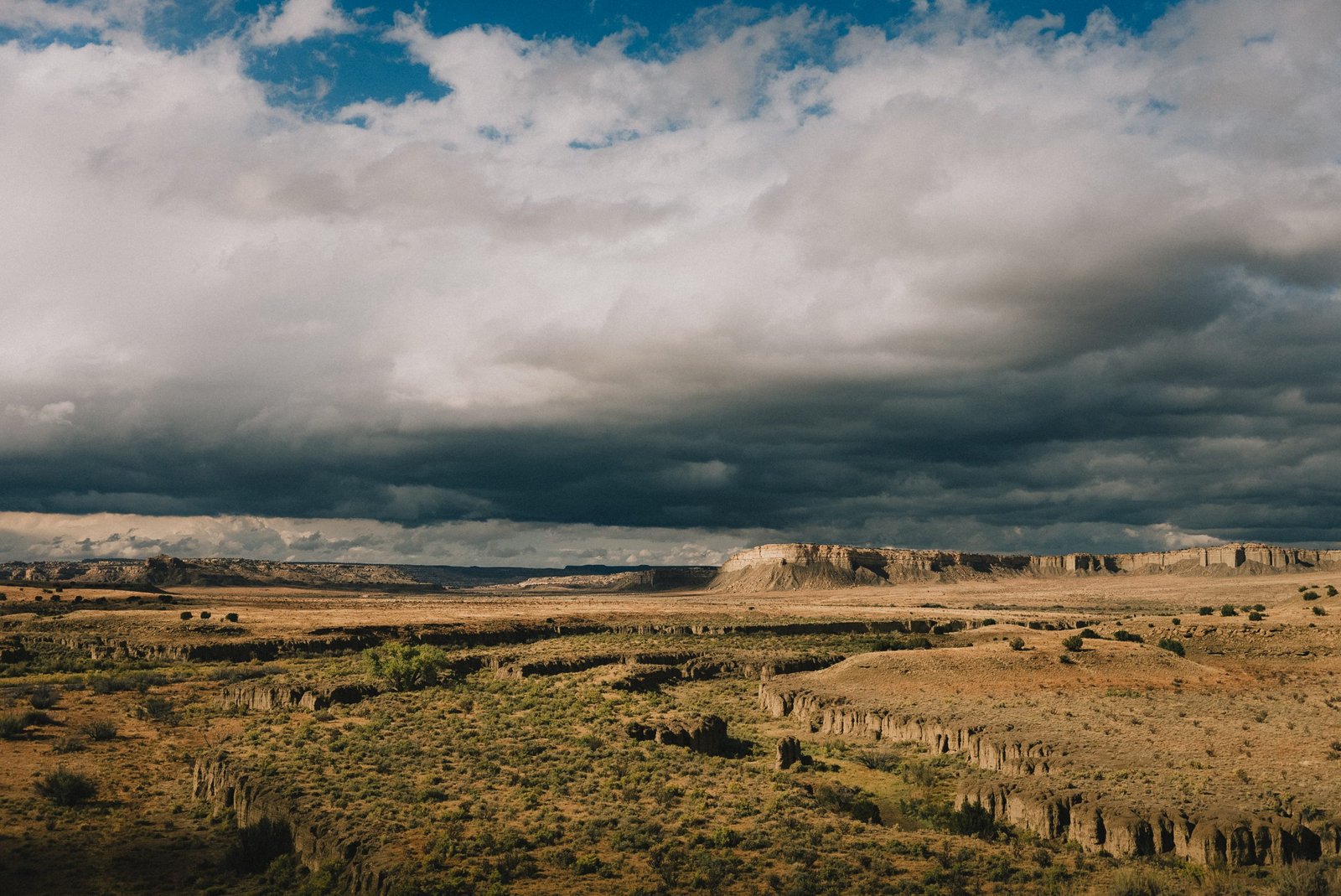
Monday, October 14th – Ghost Ranch, NM
I woke before the sun rose above the horizon. For the first time in a while, I slept deeply and warm – so warm that I even cracked my quilt open. It was a luxury I had forgotten about.
I took pictures of the sandstone cliffs as a wave of gold slowly gained over their native burnt orange color. Korn and I enjoyed the wonders of an all-you-can-eat buffet breakfast at the ranch, and soon after, I stepped back onto the trail.
The path led me along a gravel road nearing the Rio Chama, a major tributary river of the Rio Grande. A bridge carried me across the large body of water, and then the trail led me through the canyon as the light softened. By dusk, I was still walking, eager to make some miles and get closer to the next town – Cuba, NM. I ate dinner in the dark, near a rusty tire through that served as a water source. The moon rose full and clean above me, casting a pale wash of light over the dirt road and the surrounding woods. It was the kind of silence that made you sit up straighter. I felt it then – something. A presence. Like eyes behind the trees, watching from the shadowed timberline.
I kept walking, steady-footed and outwardly calm, but inside every alarm bell was clanging. Night hiking stirs a different kind of awareness – vision narrowed, sounds sharpened, the world shifting into shapes you can’t quite name.
Out here, darkness belongs to the predators.
After another hour of hiking, I camped just a few miles from the highway, on a patch of level ground. I felt proud – I’d pushed through and hiked more than I had planned to.
I. The Question
Wednesday, October 16th – Cuba, NM
I walked past scattered houses and barking dogs and reached the town of Cuba, NM. First stop: McDonald’s. Peg Leg and Syrup were there, as well as other familiar faces tucked in the corner of the place. I stuffed myself with food, then wandered to the dispensary. Word was, if you bought something, you could camp for free in their field out back. I picked up a pack of CBD gummies, hoping they might ease my foot ache a bit.
The field was tucked behind a marijuana grow, half-wild and fenced in. Not exactly your typical campsite. I looked around, laughed to myself. Sketchy, sure – but it had charm. One more odd place to call home, at least for the night.
After finishing my laundry, I found myself drifting back to McDonald’s like a sheep to its pen. McDonald’s was a haven out here – hot food, free Wi-Fi, long hours, and a warm place to sit that didn’t stink. It drew in all kinds – thru-hikers, yes, but bikepackers too. I ended up chatting with a British cyclist riding the Great Divide all the way from Banff. He looked worn in the same way I felt. I told him about the sketchy little field behind the dispensary. Told him he could crash there too. Two felt safer.
The next day, I woke to raindrops tapping my tent. When they let up, I packed and went for breakfast. The forecast wasn’t good – a storm was blowing in. And I thought the desert was sunny and dry! I gave it some thought, weighed my options, and stuck with my plan. I’d leave the next morning, no matter the weather. If my timing was right, I’d hit the summit of Mt. Taylor just after the storm cleared.
I spent the day ticking off the town chores – resupply, mailed out a box to Pie Town, then settled back into the strange comfort of McDonald’s.
At the grocery store, I was lining up my items – ramen, tortillas, Nutella – when the young cashier glanced at me and asked, flat as a board, “So, why are you walking anyway?”
I’d heard that question a hundred times before. Usually, I had an answer ready. But the way he said it – like it didn’t matter, like he didn’t expect anything true to come out of my mouth – hit different. For a moment, I just stood there. Then I gave him the safe, generic version. The one we all fall back on when we don’t want to explain too much: “I just wanted to travel and explore the country. You know, go on an adventure.”
Even as I said it, I knew it wasn’t right. It didn’t sound like me.
I walked out into the parking lot with a grocery bag in one hand and something heavier in the other. Four months. Over two thousand miles. And I still couldn’t say, with any certainty, why.
Friday, October 18th – 24 hours later
I climbed up one small mesa and watched the wind whip the sand into swirling dust devils. The wind had fought me the whole day. I wore sunglasses just to keep grit out of my eyes. The sky had darkened during the afternoon, and rain threatened. I found camp wedged between three low-standing trees – the only protected spot for a few miles around. My tent flapped in the wind, and rain started tapping the tent. I couldn’t settle. I thought about the border, wondered what weather I’d meet there. I prayed for sunshine and blue sky.
I told myself what I always do: Everything is temporary.
The next morning, rain woke me. I waited it out and then stepped out of my tent and into a world transformed. Fog tangled around the cliffs and mesas like smoke. The light was dim, almost dreamlike. A heavy layer of dark clouds laid above the horizon. I started walking with difficulty – the ground had turned to slippery paste. It wasn’t used to so much water. Each step was a gamble. Clay clung to my shoes like bricks, weighing them down. I moved slowly. The rain fell on and off – never enough to quit, but just enough to wear me thin.
The whole day, I didn’t see a single soul. I walked alone, with my thoughts, into this barren, muddy, relentless country.
In the afternoon, a break in the clouds let the sun through. But not for long. After crossing a shallow river that had swollen with the latest rainfall, I saw the climb ahead – dark clouds massing over it like a warning. Lightning cracked the sky open across the ridge. I waited for half an hour behind a cluster of trees near an empty water cache, watching the thunderstorm closely. When it passed, I moved fast. Who knew when the next one would hit – there was never just one.
The trail climbed fast and steep. I was soaked in sweat and breathing hard when the sky lit up again, white and sudden. I didn’t wait for another warning. Quickly, I found a flat spot sheltered under a few trees and pitched my tent as fast as I could. Soon after I had entered my tent, hail pounded like marbles on the ground. Thunder followed, deep and brutal, like drums at a metal concert – raw, deafening, and close. I could feel it in my bones, in my chest. It was right above me.
Flashes of light burst through the fabric of my shelter, one after another. It felt like watching fireworks from inside my room on Bastille Day. I used to hate fireworks as a kid. But tonight, I wasn’t scared. I was in awe in front of this display of raw power. Lightning kept tearing through the sky, each bolt shredding the darkness like a blade through paper. I laid still.
Then, through the storm, I heard voices – the first I’d heard in over a day. Peg Leg and Syrup. They’d camped farther down the mountain, I heard them say as they passed. Sounded like they were moving on.
II. Tsoodzil, the Turquoise Mountain
In the morning, I finished the climb and stepped onto the flat top of the mesa. Visibility was low – a heavy mist clung to everything, swallowing the horizon. Charred trees leaned along the path, their limbs twisted and lifeless. Crows cut through the fog, cackling as they vanished between the few standing trunks. I felt as if I were walking into the set of a Tim Burton film.
Later, the wind blew the mist away, and for the first time in the past two days, I saw blue sky and felt the warmth of the sun. The trail was easy, but dull. The water carry was long, but the cool air helped. By the end of the day, I made camp beneath tall pines as the sun melted into the horizon. Finally, I was dry and warm. That night, I didn’t put my rain fly on and fell asleep while watching the stars appearing one by one in the darkening sky.
Monday, October 21st – Mt Taylor Alternate
I woke up cold. A layer of frost clung to my gear. The storm had dragged in a cold front behind it – temperatures were dropping, and it was clear now: fall had settled in for good. I passed a hunter’s camp and took the Mt. Taylor alternate – a dirt road that went up most of the way. In Navajo, Mt Taylor was known as Tsoodzil (Turquoise Mountain) and was one of the four sacred mountains that marked the Navajo homeland.
The sky was clear, the air crisp. I was surprised to walk through patches of snow near the summit. Finally, by 3 pm, I reached the top. I waited for sunset, shivering in the wind. But the panorama was worth it.
I hiked down in the dark and set up on the side of another dirt road. Tired, but satisfied.
The next day, I walked into Grants and checked into Motel 8 just after noon for a long-needed shower and rest. Peg Leg stopped by my open door, and we caught up. I told her I’d heard her and Syrup walk past my tent during the stormy night. She shared her side.
That night, they’d camped at the bottom of the mesa, just a few hundred yards below me. Both in their tents, sheltering from the hail, when suddenly she heard a rushing roar. The ground shook, but it wasn’t thunder. Before she could react, a wall of water hit the tent – a flash flood. They scrambled out, grabbing what they could.
Soaked and with half their gear lost, they decided they couldn’t stay out there. They pushed on, heading straight to Grants – about 60 miles nonstop. It sounded like hell.
Hearing this, I empathized with them and felt grateful for myself. Lucky even. I realized I’d only avoided the same experience by pushing further uphill. That realization sat heavy. Close calls often did.
Destinations & Things To Do
You’re hiking the Colorado Trail alone?!
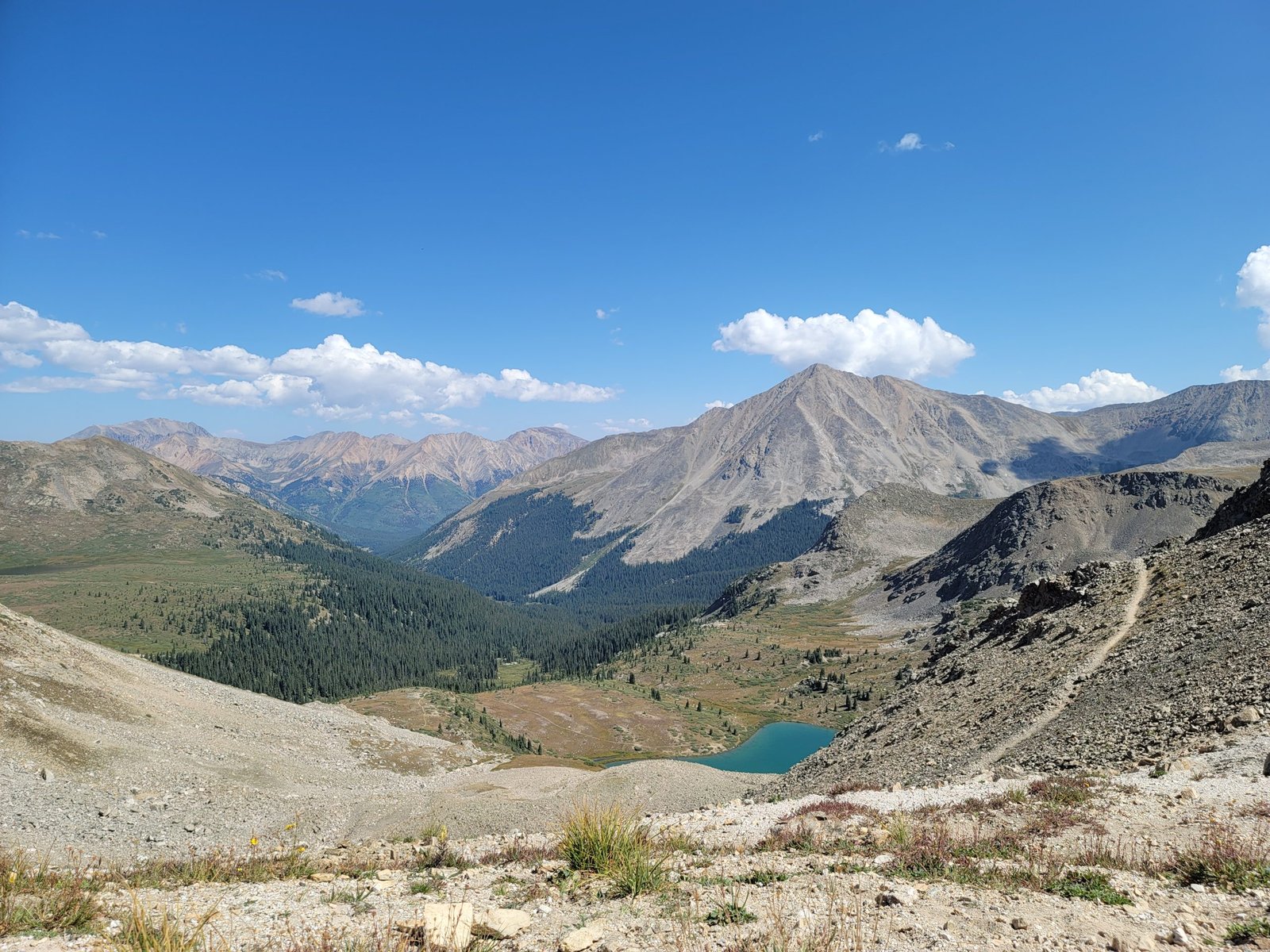
“Why would you want to hike 500 miles alone?”
“You need to be careful; anything could happen.”
“I really wish you wouldn’t hike this trail.”
These are all things I’ve heard as more friends and family learned of my plans to hike the Colorado Trail, taking the Collegiate West route. Thankfully, I’ve never been one to let fears stand in my way of what I wanted to accomplish.
I didn’t know about the Colorado Trail until I moved to Colorado in 2013. It was a trail I quickly learned about, but it didn’t seem like anything I’d ever be able to do. I had hiked and camped a lot growing up, but my dad was the type to bring everything except the kitchen sink. If I ever wanted to do the CT, I’d need to learn how camp very differently. Even if it was only a pipe dream at the time, I knew it would be life changing if I could accomplish it. Over the years, I began hiking, camping and backpacking all across Colorado, getting more and more comfortable with my abilities, and loving every minute of it. Still, hiking 500 miles seemed impossible.
It started with a kidney donation.
Fast forward to 2020/2021. One of my friends needed a kidney transplant and I decided to see if I was a match. To my surprise, I was, and surgery was scheduled for February 2021! I spent a lot of time in 2020 backpacking (I mean, who didn’t need a mental health boost that year). I didn’t know the time spent on the trail would also help me prepare for and recover from surgery. Once we had our surgery, I was already looking forward to the next time I could get back out there. I started hiking again only a month post-op.
After learning about how many people struggle with kidney disease, I decided I would find a hike and turn it into a fundraiser for the American Kidney Fund. I landed on hiking as much of the Collegiates as I could manage, with the goal being at least 100 miles. Just 6 months out from our surgery, I started my hike. I fell a bit short of my goal with only 60 miles of the Collegiates completed, but I raised around $2000 for the AKF. After that, I knew I would eventually come back to attempt the full trail.
Time is ticking.
In my “real life,” I work full-time as a nurse in Arkansas, so I wasn’t sure if I’d even be able to hike the CT. Who can afford to quit their job or take a month of PTO just to hike?! Well, turns out working as a nurse is helpful there, and I was able to take a month of PTO to do just that. Now, I’m only a few days out from starting my adventure on the Colorado Trail. In preparing for the trail, let’s just say “mistakes were made” may as well have been my nickname.
This past year has been full of ups and downs to get to this point, and I’m not sure any amount of training would have me feeling ready. But I’m here, and the time is ticking down until I step on that trail. Yes, I will be hiking alone. Trust me, I’d love to share this experience with a select one or two humans, but schedules don’t always align. I know I’ll meet some new friends on the trail, though! I’m as ready as I can be and I am so excited to share my journey with you all!
This website contains affiliate links, which means The Trek may receive a percentage of any product or service you purchase using the links in the articles or advertisements. The buyer pays the same price as they would otherwise, and your purchase helps to support The Trek’s ongoing goal to serve you quality backpacking advice and information. Thanks for your support!
To learn more, please visit the About This Site page.
-

 Brand Stories2 weeks ago
Brand Stories2 weeks agoBloom Hotels: A Modern Vision of Hospitality Redefining Travel
-

 Brand Stories1 week ago
Brand Stories1 week agoCheQin.ai sets a new standard for hotel booking with its AI capabilities: empowering travellers to bargain, choose the best, and book with clarity.
-

 Destinations & Things To Do2 weeks ago
Destinations & Things To Do2 weeks agoUntouched Destinations: Stunning Hidden Gems You Must Visit
-

 Destinations & Things To Do1 week ago
Destinations & Things To Do1 week agoThis Hidden Beach in India Glows at Night-But Only in One Secret Season
-

 AI in Travel2 weeks ago
AI in Travel2 weeks agoAI Travel Revolution: Must-Have Guide to the Best Experience
-

 Brand Stories1 month ago
Brand Stories1 month agoVoice AI Startup ElevenLabs Plans to Add Hubs Around the World
-

 Brand Stories3 weeks ago
Brand Stories3 weeks agoHow Elon Musk’s rogue Grok chatbot became a cautionary AI tale
-

 Asia Travel Pulse4 weeks ago
Asia Travel Pulse4 weeks agoLooking For Adventure In Asia? Here Are 7 Epic Destinations You Need To Experience At Least Once – Zee News
-

 AI in Travel4 weeks ago
AI in Travel4 weeks ago‘Will AI take my job?’ A trip to a Beijing fortune-telling bar to see what lies ahead | China
-

 Brand Stories4 weeks ago
Brand Stories4 weeks agoChatGPT — the last of the great romantics

